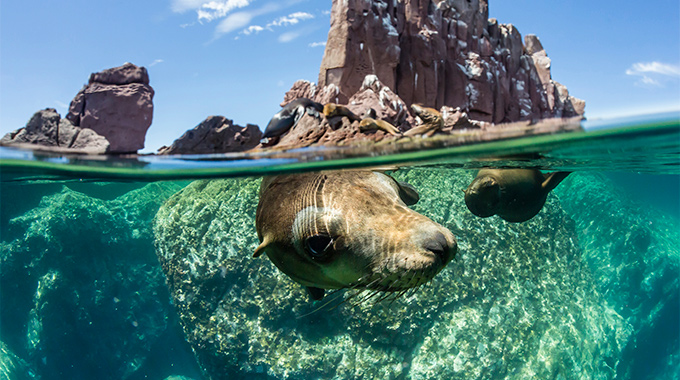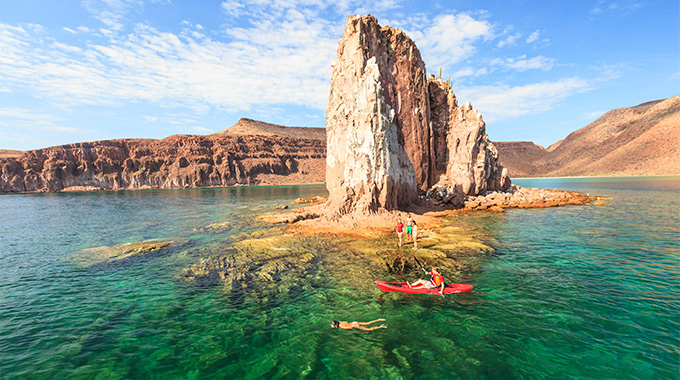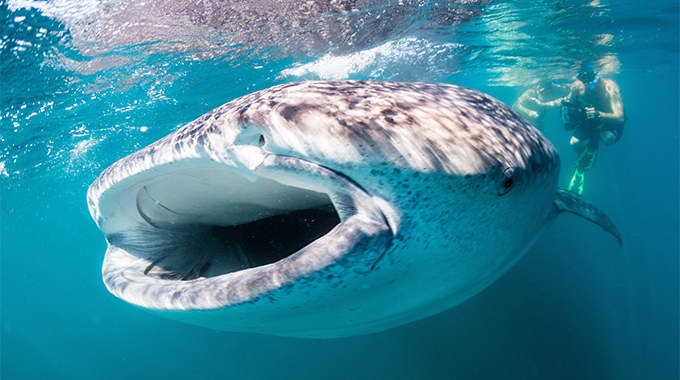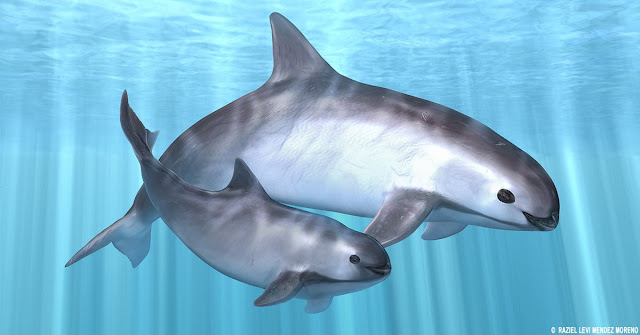5 adventures near Baja California's Cabo San Lucas - AAA Magazine
July 18, 2023
As our boat pulled into Los Islotes, a rocky landmass in the turquoise waters of Mexico’s Sea of Cortez, I gazed out at the area’s newest residents and couldn’t contain my enthusiasm. “Babies, they’re all babies!” I squealed as 20 or 30 sea lion pups barked in unison. These small islands near La Paz are home to a permanent colony of about 600 sea lions. With my wet suit and snorkel on, I jumped into the water and swam among the playful puppies.
Most visitors to Baja California Sur, the southern part of the Baja Peninsula, head straight to Cabo San Lucas, the region’s hub of visitor activity. But to enrich your trip, consider any one of these adventures within a day’s drive from Cabo.
1. Swim with sea lions in the Sea of Cortez

Sea lions at Los Islotes in Baja California Sur. Photo by Getty Images/Collection Mix
Jacques Cousteau dubbed the Sea of Cortez “the world’s aquarium,” and a great place to experience this marine wonderland is near La Paz, about 100 miles north of Cabo. From there, you can travel by boat to the government-protected islands of Los Islotes, where, from September to May, you can snorkel or scuba dive with friendly sea lions. Just remember: They’re wild animals and you’re a guest, so don’t touch them.

Espíritu Santo Island. Photo by Stuart Westmorland/Getty Images
Consider: Spending a few days at Todos Santos
Eco Adventure’s solar-powered luxury Camp Cecil de la Isla, open
November through June, on Espíritu Santo, an island north of La Paz with
no permanent habitation or hotels. Double-occupancy rates start at $375
per person.
2. Hang with whale sharks in the Bay of La Paz

A whale shark feeds on plankton and krill in the Bay of La Paz. Photo by Brent Durand/Getty Images
Another sought-after marine encounter is swimming with whale sharks. Despite their name, these massive creatures aren’t whales; rather, they are the world’s largest fish (and harmless to humans). One of the best places on the planet to see these 20-ton behemoths up close is in the Bay of La Paz. Among the responsible companies that run snorkeling trips from roughly November through May is Red Travel Mexico in La Paz. You’ll need to swim fast to stay alongside these gentle giants, which can reach up to 40 feet in length. Just don’t touch them; doing so could damage their protective mucus layer. And check on tours in advance; locals suspended whale shark outings in early 2023 due to the low numbers of whale sharks in the area.
Don’t miss: The fish tacos at El Estadio Tacos de Pescado y Camaron or TacoFish in La Paz.
3. Explore artsy Todos Santos in La Paz
Todos Santos is among Mexico’s 175-plus Pueblos Mágicos—“magical towns” designated for cultural and historic heritage. Located about 50 miles north of Cabo, the town is a legit oasis with fresh water and lush palms fed by an underground aquifer. Surfers, bohemians, and artists have flocked here for decades, drawn to the town’s charming vibe, the nearby beaches, and the area’s picturesque desert light. New art galleries continue to pop up. Check out the longstanding Galería de Todos Santos, which opened in 1994, and sign up for a mosaic art class with artist Donna Billick.
Consider: Visiting in February during the annual Todos Santos Open Studio Tour, when you can meet more than 50 local artists and purchase their work.
4. Dive into Cabo Pulmo
A world away from San Jose del Cabo’s developed beaches, Cabo Pulmo National Marine Park is home to one of North America’s largest and most diverse reef systems. Once threatened by overfishing, it gained protected status in 1995, eventually becoming a UNESCO World Heritage site. Cabo Pulmo Beach Resort runs diving and snorkeling trips among sea turtles, bull sharks, dolphins, whales, mobula rays, and, of course, massive schools of fish.
Don’t miss: A stop at the community center to learn how this tiny fishing village became one of the world’s biggest conservation success stories.
5. Visit historic El Triunfo
Less than a 2-hour drive from Cabo lies the once-booming mining town of El Triunfo, where the new Museo del Vaquero de las Californias celebrates Baja California’s cowboy culture. Its sister museum, Museo Ruta de Plata, focuses on the area’s “silver route” mining history and includes stories told by local families. If you’re hungry, grab a wood-fired pizza at Caffé El Triunfo or a craft beer at El Minero Restaurant and Bar. (Be sure to designate a driver if you plan to drink alcohol.)
Don’t miss: Nearby Santuario de Los Cactus, a 124-acre cactus sanctuary that’s home to more than 50 species of cacti, including the massive Cardón.
Kathleen Rellihan has written for Afar, National Geographic, and Outside. She loves exploring the back roads of Baja.
Original Article: https://www.ace.aaa.com/publications/travel/international-destinations/beyond-cabo-san-lucas.html



Comments